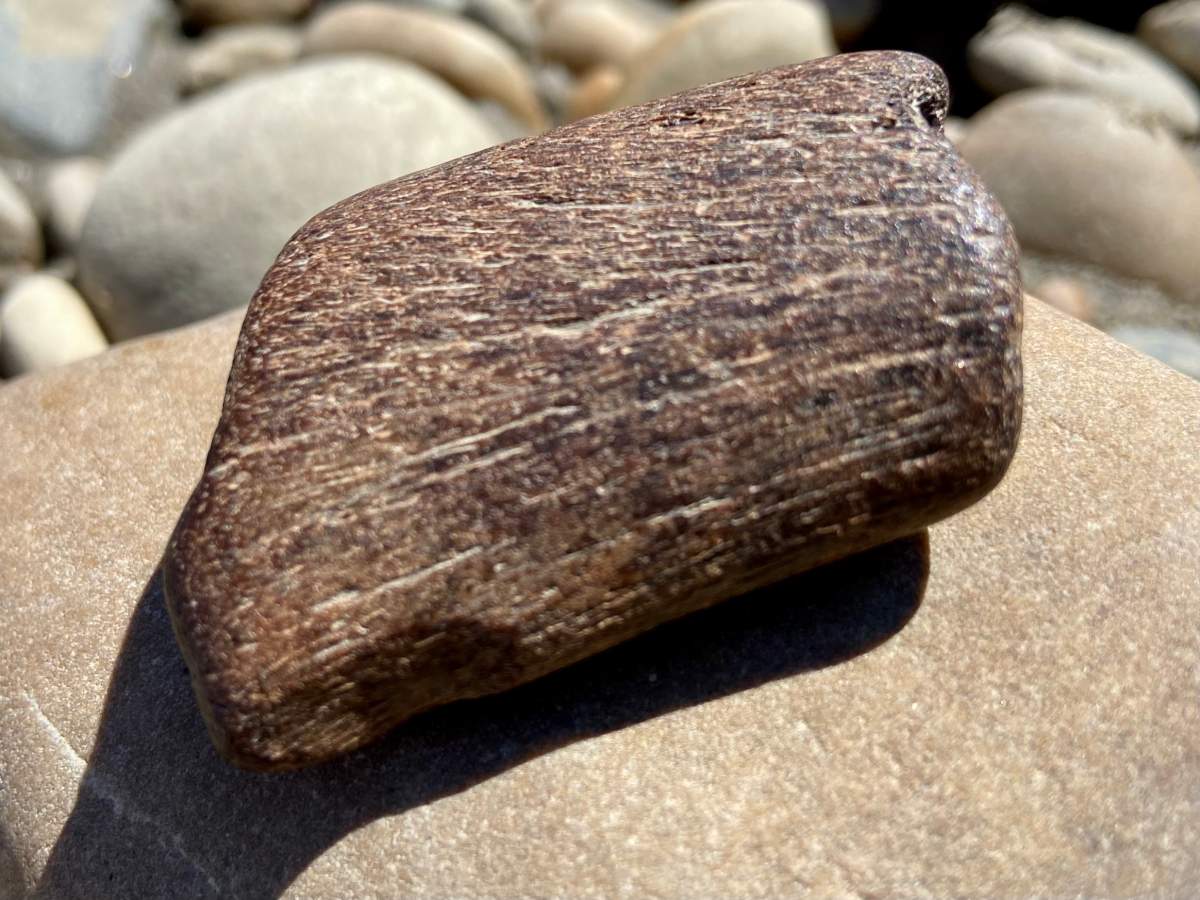An Edmonton woman and her son are now the proud owners of a dinosaur fossil after stumbling across a piece of ancient history last week.

Kristy Carlyle and her son were walking along the river last Thursday looking for rocks — a favourite pastime of theirs — when she found what looked like a fossil.
She said it looked different than the other rocks and when she picked it up, she could feel little bubbles near the end and knew it was a bone.
“Initially I didn’t know what it was, I just thought maybe it was from an elk or a cow, I don’t know. I wasn’t thinking that big,” Carlyle said.
After posting a photo of the discovery on Reddit, she received responses saying it could possibly be a dinosaur.
“It was pretty cool. You never think you’re going to find a dinosaur bone down by the river looking for rocks,” she said.
“It’s mind-blowing.”
Cash Carlyle Heide, Carlyle’s 8-year-old son, said he thought the bone was probably a “weird rock” when he first saw it.

Get daily National news
“It’s super-duper cool because it’s really hard to find a dinosaur bone,” he said.
Carlyle said she isn’t sure what they’re going to do with the fossil. In Alberta, a person is legally allowed to keep a fossil if they find it above ground, Carlyle said, but technically it belongs to the government. She can, however, hold on to it as a caretaker.
“I’ve been down here for so many years and I’ve never found anything like that,” said Carlyle who grew up in the area and has spent lots of time down by the river with her family.
Her son, on the other hand, says he wants to keep the bone, and plans to come down to the river more often to see if he can find more fossils.
University of Alberta professor Murray Gingras said it can be hard to identify a bone like the one Carlyle found since it is quite small and weathered. But, he added, you can use the size of the bone to “think of the dinosaur fauna that’s been discovered in the rocks around Edmonton over the last 90 (to) 100 years.”
“I think it’s reasonable to conclude that you have something like a Hadrosaurus, one of those duck-billed dinosaurs … It fits with the size and the shape and what’s known about the area,” he said.
Gingras agreed that it is pretty rare to find a bone like that in a riverbed, however, its location is concurrent with many other underground fossil findings.
“The river cuts right through strata that’s cretaceous in age, it includes the Horseshoe Canyon formation, the Whitemud formation — these are all part of geological units that form the Edmonton group,” Gingras said. “If it’s from the Whitemud formation, wherein we’ve found lots of Hadrosaurs in the Edmonton area, all the way since 1910 or so, then that rock would be about 68 million years old — just before the big extinctions that happened with the meteorites.”
“It sure looked like dinosaur bone to me,” said Dan Spivak, head of the Royal Tyrrell Museum’s resource management program.
While he’s only seen photos of Carlyle’s find, he said the Hadrosaur assignment is possible given the territory in which it was found. However, it’s still very difficult to know for sure without doing more investigating.
“Alberta has a pretty rich paleontological history and it mostly covers the Cretaceous,” Gingras explained. He said from Dinosaur Provincial Park across to Crowsnest Pass and up to Grande Prairie there’s a “huge dinosaur diversity.”
“You could expect a pretty good range of fossils, so us calling this bone a bit of a duck-billed dinosaur, or Hadrosaurus is a little bit on the bold side,” he said.
As for any future dinosaur hunters, Gingras said to get familiar with pattern-recognition, a strategy paleontologists use in which “you become familiar with the general look of something and so you recognize it immediately.”
“If you want to get good at fossils, you have to get used to their colour, their texture and how they differ with the typical rocks in Edmonton gravels.”
If you do find something, Spivak suggests taking a photo of the fossil and geo-tag the source location and give the museum a call to assess.
He said the Drumheller, Alta.-based museum gets about 200 reports of fossil finds from the community every year.
“It’s not unheard of to get bits and pieces of dinosaur bone here and there,” Spivak said.
— with files from Lisa MacGregor, Global News









Comments